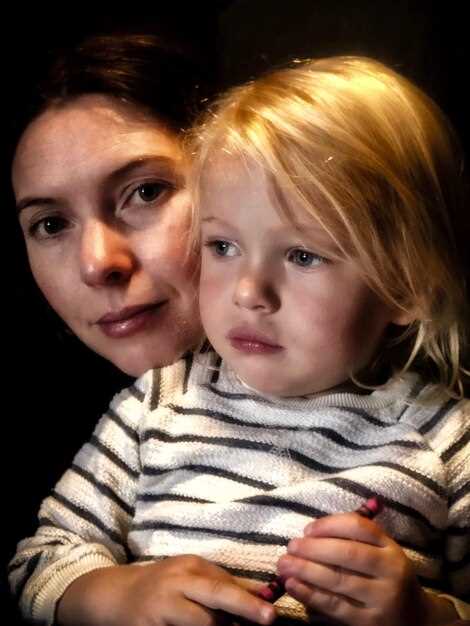Always verify with official statements and credible archives before publishing; attend to accuracy and privacy when covering sensitive personal timelines.
The idea here is to separate speculation from documented history. The mother figure was kept at arm’s length for many years, a move spurring debate about private boundaries and how media narratives shape family life in the entertainment sphere. Context suggests a pattern rather than a single incident.
Visual records in wireimage catalogs, with credits by Maisler and Galella, show moments when public attention intersected with private life. These images illuminate the cadence of appearances, the work schedule, and the long arc that affects the cast and crew. The timeline hints at a change in how the public perceives a family life alongside a high-intensity acting career. photo
To report this responsibly, consult primary sources and consult figures who might know the context. A note from paul in the internal brief stresses that journalists should attend to verifiable timelines and avoid sensational framing. Where possible, place events on a clear timeline and indicate when attendance at family or professional functions occurred. Before you read any caption, check the source’s credibility; this isn’t merely about life in the spotlight, but about life balance and respect for boundaries in a widely followed profession. Then, many readers consider how childhood schooling and family routines intersect with public exposure. careful
Ultimately, the article should present a grounded interpretation that honors privacy while acknowledging the dynamic between life on screen and private life. This approach helps readers interpret the timeline without sensationalism, and it frames the balance as a matter of change that affects relationships, work commitments, and personal well-being. Use credible visuals and citations; the idea is clarity, not clickbait. closing
Practical angles for responsible coverage and audience questions
Start with a fact-first approach: verify every claim with official statements, credible records, and direct quotes, then separate speculation from confirmed information in every update.
Frame coverage by distinguishing what is verified from what remains unverified, and avoid insinuations about motives or private life unless clearly stated by involved parties, because that keeps readers read on the facts and protects those in the life cycle of work and family.
When inviting reader questions, suggest what to ask: what sources confirm a detail, what time frame is involved, where to read the original statements, and what context explains any gaps in a public schedule; also consider whether attend events, attend auditions, or attend school activities might shape the narrative, and how that life intersects with on-screen work and the cast.
Include voices across public figures such as maisler, galella, livingston, ferrera, and paul to illustrate how coverage can reflect different angles; note that images or clips can be misleading without accompanying context, so encourage readers to think about the broader arc of life and career rather than a single frame in time; this helps the cast and crew context stay in view.
Offer a practical audition of questions for the audience: what is the aim of this piece, what evidence backs any claim, where to read official material, how much weight to give rumors, and what idea should guide the next update; end with a sunday round-up that presents clear, labeled sections: what is confirmed, what is speculative, and what is next in the discussion.
Verify the claim using credible sources and corroboration
Start with primary sources–an official statement issued by the agent paul maisler and any direct remarks by mcconaughey about family matters. This is the most reliable starting point for verification.
Next, cross-check with international outlets such as Reuters, AP, BBC, and Variety for independent coverage; read the exact language used regarding timelines, and verify whether a clear, verifiable sequence of events is presented.
Use search terms like galella, ferrera, livingston, family context, and attend acting school to locate archived profiles that describe early life and audition experiences. If a claim cites a specific incident, read the surrounding context to assess credibility. This idea should be corroborated by multiple sources rather than a single quotation.
When evaluating sources, consider the time of publication, the credibility of the outlet, and the author’s track record. Ask: who runs the outlet, what is the original source, and where does the information come from? This approach helps distinguish speculation from documented fact.
| Source | Medium | Focus | Veracity | Notes |
|---|---|---|---|---|
| official representation | Agency release | Statement by paul maisler | High | Look for direct quotes; mcconaughey mentioned. |
| Reuters | Newswire | Independent coverage and timeline | High | Check if piece cites sources or documents. |
| AP News | Newswire | Background context | High | Cross-check with other outlets. |
| BBC News | Online | Context in career trajectory | Medium-High | Assess consistency with other reporting. |
| Odrůda | Industry publication | Entertainment industry perspective | Medium | Useful for corroboration, not primary confirmation. |
| galella archives | Public records | Paparazzi context | Low-Medium | Use cautiously; corroborate with primary sources. |
Build a verifiable timeline from interviews, statements, and leaks
Recommendation: Compile a master timeline by aggregating interviews, statements, and archived images; validate each entry with at least two independent sources. This approach might reveal what actually happened over time and what remains uncertain.
Segment source streams: interviews (on-camera, radio), formal statements (agency notes), and image records (wireimage captions). Review direct quotes, date stamps, and attribution with names such as Galella, Maisler, Ferrera, Livingston. When captions mention an audition, tag it as first-hand evidence; attend the moment when a cast member was active on international work and school projects. The life details you collect may include family context and living arrangements, which might influence the timeline.
Date verification process: cross-check the caption date with a calendar, Sunday airings, and transcripts. For each entry, ask what happened, who attended, where work commitments were, and whether shoots occurred abroad. Compare Paul or other interviewers’ timelines against this; that comparison will help you think clearly about what is verified and what is speculation. Make sure to read captions carefully and note any change in the narrative as new information appears.
Data fields to capture: Date, Source type, Location, People involved, Link/ID, What was said or shown, Evidence quality, Conflicts noted. Use a consistent template like: DATE | SOURCE | CLAIM | EVIDENCE. This format helps readers track how a claim evolves over time.
Triangulation rule: when what is stated aligns with wireimage images and Maisler notes, credibility rises. If an item lacks corroboration, mark as uncertain (wasnt corroborated by the gallery or diary notes). This transparency allows readers to navigate complexity without assuming certainty.
Illustrative entry scaffolding: a Sunday interview might reference life with Ferrera and Livingston, a first audition described by Paul, a camera pack from wireimage, and Maisler’s shoot diary to anchor a date. In such cases, map the sequence into a time-bound grid and always attend to potential alternative interpretations. The goal is to present a clear idea of how events interrelate across international assignments and life as a cast member.
Output format: a concise narrative anchored with links to original sources; include image IDs where available, and note any sources that “read” as rumor versus fact. Remember to go back to the primary records; this approach might yield a robust, verifiable timeline you can share with editors and readers who demand precision.
Assess potential effects on family relationships and public perception
Recommendation: keep messaging clear and consistent for people, safeguard family life, and minimize speculation by coordinating with media relations to present a measured account across international audiences.
In acting life, private dynamics can read as a sign of hesitancy when the public narrative suggests distance. To ease tension, families should have well-supported, open dialogue and attend to emotions that surface. The idea is to maintain school routines, nurture life at home, and that might help reassure people who read wireimage captions and international coverage.
Public perception can be shaped by what images circulate. First impressions on sunday segments or interviews may influence what people think about work-life balance. If consistency is maintained, audiences may see a pattern where family remains a priority, which helps the cast and the team welcome continued support from Paul and Maisler and Livingston in shaping the narrative.
Strategic steps: first, align a transparent timeline of work and family life; then attend key events that signal continuity; always coordinate with trusted advisors like Maisler and Livingston to maintain consistent talking points; use Paul as a point person to read materials before release; ensure wireimage images reflect the intended direction. This approach helps people read the intent of the family life and reduces misinterpretations.
Long-term impact: with careful messaging, relationships stay strong and public perception remains stable; this requires ongoing sunday updates that attend to life and family, and that the audience understands that work remains a part of life rather than a separate chapter. This strategy might improve trust and reduce image distortions that could otherwise affect everyday life at home.
Navigate defamation and privacy concerns when publishing unverified rumors
First, verify claims with two independent, credible sources and obtain legal clearance before disseminating any material about private life.
If verification fails, avoid naming individuals or implying relationships; publish only neutral, attributed summaries or decline publication.
Use neutral language and avoid sensational wording; indicate that statements are unconfirmed and subject to revision while preserving readers’ ability to assess credibility.
Credit wireimage images with licensing details and respect image rights; reference Galella-style origins only when provenance is verified; a policy example from paul, a manager, shows how to handle archival material in international contexts.
Non-public figures deserve stronger privacy protection; for high-profile individuals, apply a heightened standard and document in what context information is relevant; if something touches private life, halt publication unless public interest is clearly demonstrated and supported by credible sources.
When handling mcconaughey-like figures, adhere to stricter verification and avoid insinuations that invade family life or intimate matters unless there is a solid, public interest reason and reliable confirmation.
Before releasing any item, read the newsroom policy and attend review sessions; allocate time for due diligence, ensuring the idea that accuracy takes precedence over speed is embedded in the workflow.
Claims touching professional opportunities, such as audition outcomes or casting, should be excluded unless verified; rumor about work can mislead readers and harm careers.
Communicate uncertainties clearly and plan for updates as more information emerges
Begin with a concise uncertainty notice: details remain fluid and updates will follow as new information emerges. This keeps readers aware that what is known today might change, and a revised version will be published when reliable sources provide new context.
-
Uncertainty framing and cadence: might change; before publishing a claim, label it as confirmed or unconfirmed, then plan an update once additional documents surface. When mcconaughey-related material appears, read it against the broader life context to avoid overreach, and always show where sources differ.
-
Evidence mapping: create a transparent map of what exists and where it came from. Use wireimage and international outlets to anchor visuals and timelines, and reference archival notes from galella when relevant. If maisler, ferrera, or paul offer commentary, present their idea with clear attribution and explain any potential bias.
-
Timeline design: build a living chronology that includes where and what happened, with time stamps such as time and sunday markers. For each entry, specify what is read as fact, what is wasnt confirmed, and what remains to be verified. If a report mentions audition activity or attend events tied to the cast, note the context and the source.
-
Audience guidance: use plain language so people can follow the logic without speculation. Before asserting a link between private moments and public events, explain the limits of what is known and what isnt, because ambiguity can arise from incomplete records.
-
Communication channels and cadence: publish a short update after major developments, with a clear summary of what changed and why. The goal is that readers read the new note and compare it with previous entries, then decide what to trust until more evidence appears.
-
Editorial ownership: assign clear responsibility to editors such as livingston and paul for updates, with ferrera or galella as contextual references when mentioning photos or interviews. This approach keeps the process transparent and helps readers track how the story evolves as new material becomes available.
Idea: maintain a simple, repeatable format for each entry–what, where, when, who, and the confidence level–so that change becomes predictable rather than jarring. This method ensures that life details surrounding the actor’s career, school, and acting work are presented in a responsible way that respects readers and sources alike.

 Matthew McConaughey Allegedly Took an 8-Year Hiatus from His Mom After Press Leaks">
Matthew McConaughey Allegedly Took an 8-Year Hiatus from His Mom After Press Leaks">


